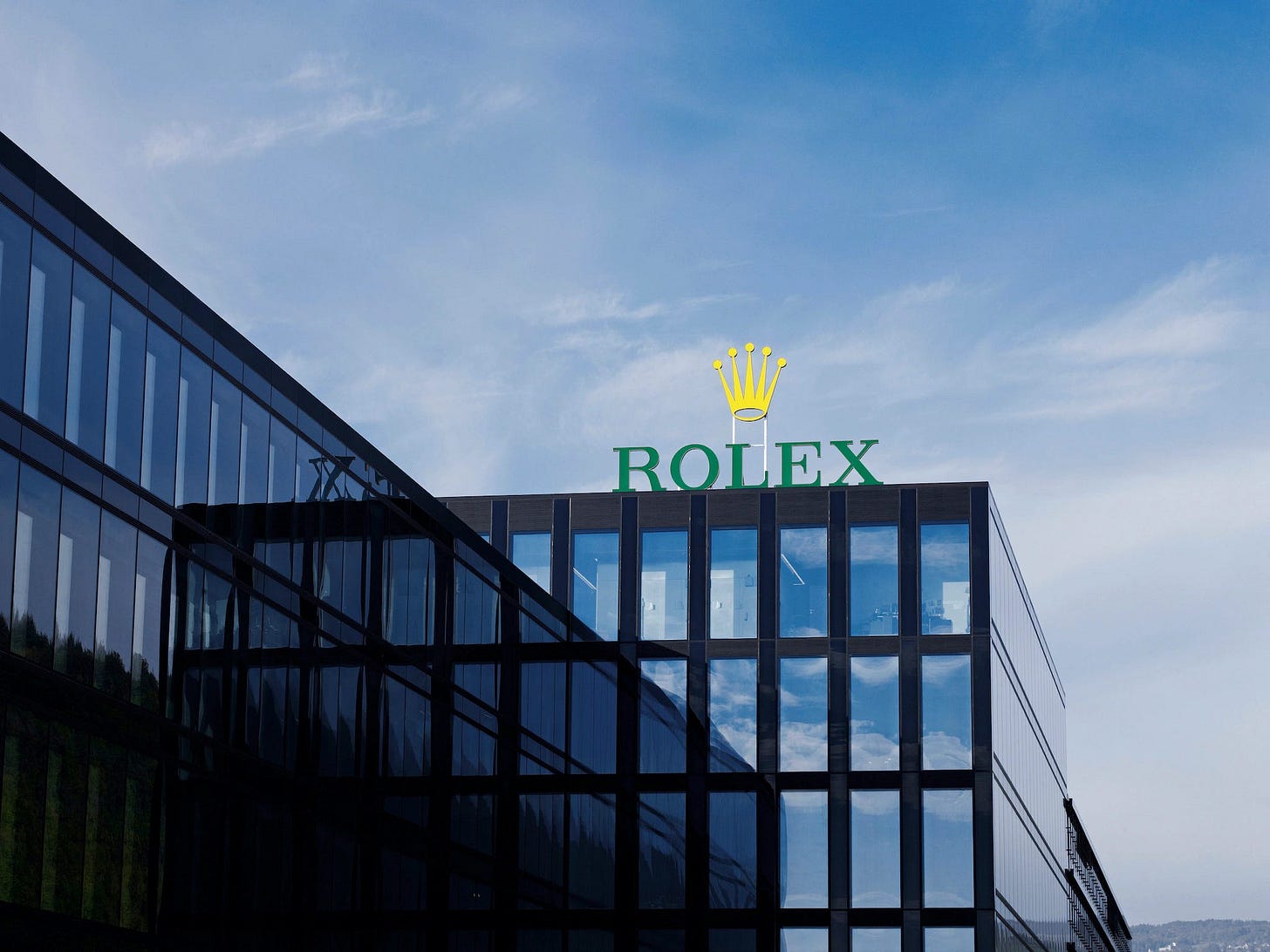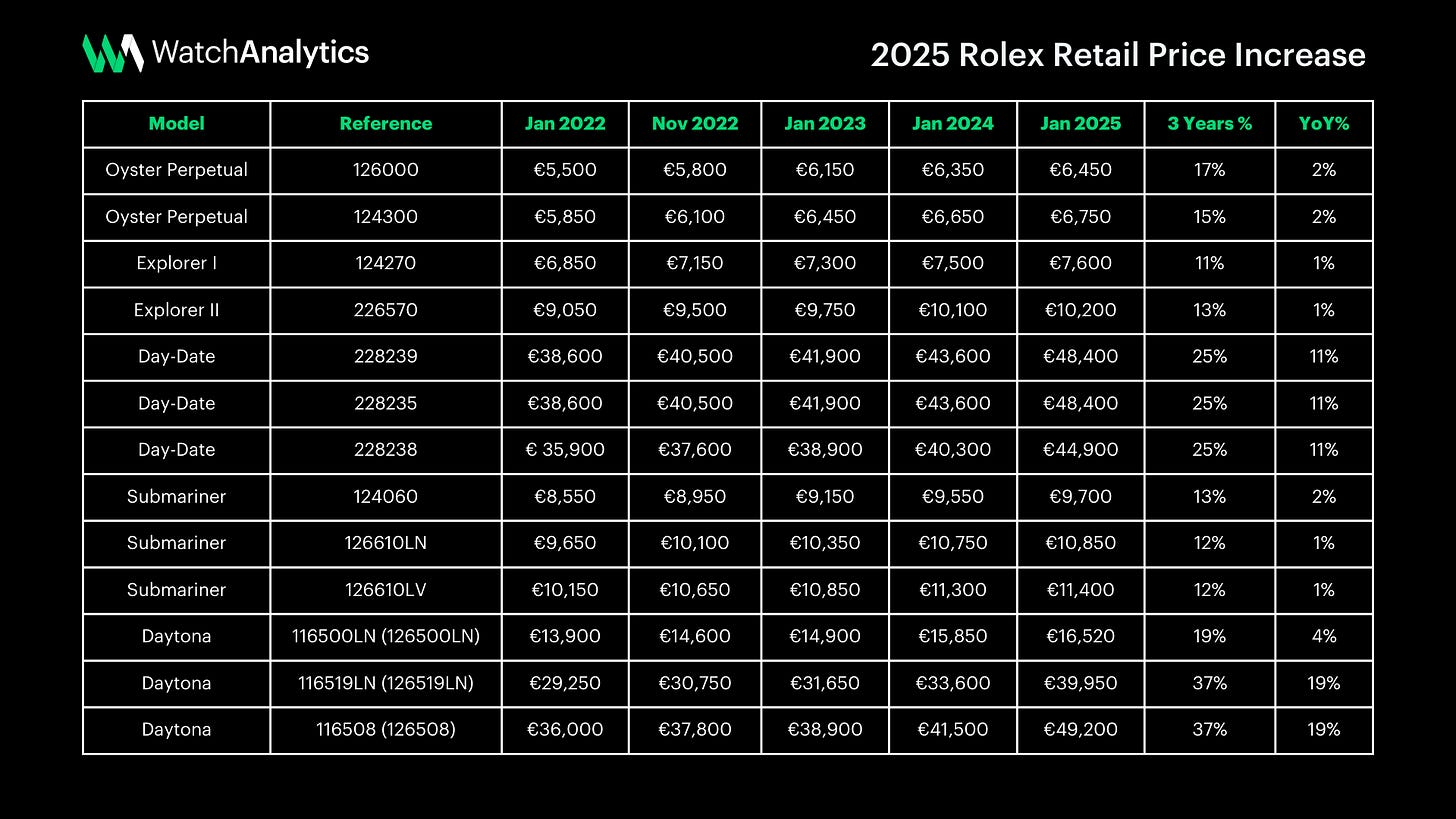Rolex Increases List Prices for 2025
2025 begins with new Rolex price list increases: gold registers the biggest increases. Find out all the increases from 2023 to date
With the start of the new year, Rolex updated its list prices, an appointment that has unfortunately become habitual for watch enthusiasts and collectors.
Rumors had already been circulating during December, with some unofficial photos made to the communication email turned over by Rolex to its dealers.
The new prices, effective Jan. 1, 2025, reflect a well-considered strategy that takes into account rising production costs, particularly for precious materials such as gold, a raw material whose price has fluctuated significantly over the past year.
General overview of increases
The average Rolex list price increase for 2025 is around +4.8%, overall, with significant variations depending on material and model. This increase maintains the direction already taken by Rolex with 2024 increases that had been around +4%, while in 2023 they had been +7.8%.
While steel models see modest increases (between +1% and +1.5%), steel and gold watches see far more pronounced increases, up to +11%. This, as mentioned, is due to the rise in the cost of gold in 2024, which registered a +33% increase from CHF 1,750 to CHF2,334 per ounce.
Increases for material
Stainless steel: Increases are minimal, with an average increase between +1% and 1.5%.
Gold watches experienced significant increases of up to +14%.
Platinum: small increases (about +1%) due to the stability of the metal's price on the stock market.
Titanium: the Yacht-Master 42 collection in RLX Titanium, which registered an increase of +5.42%.
Increases for models
Oyster Perpetual

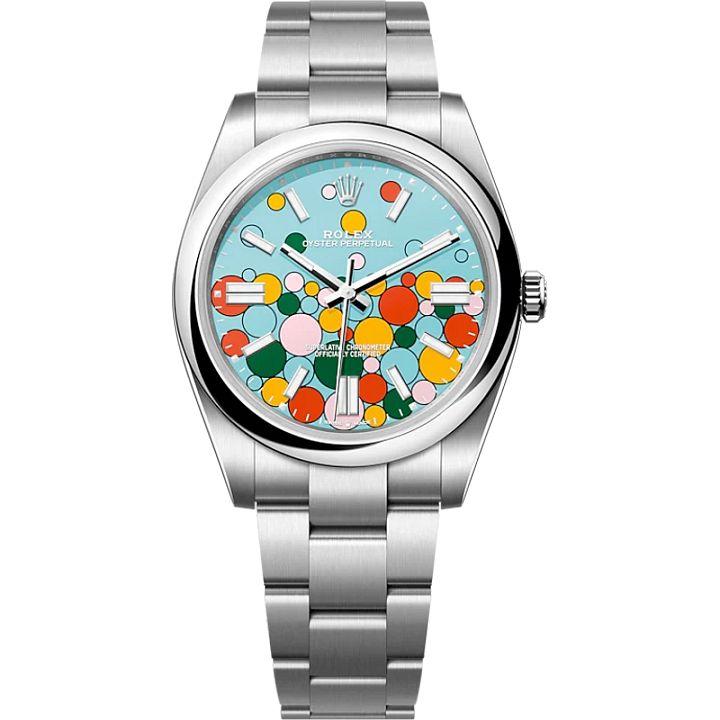
After the sharp price adjustment that took place between 2022 and 2023, partly due to the very strong demand in the market for the new colors, especially for the Tiffany dial configuration, the increase in 2024 was only +3% for both models. This year, on the other hand, both references were increased by only +2%, in line with the average increases for all steel models.
Explorer
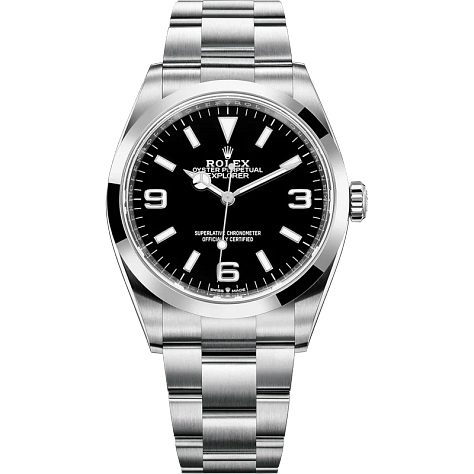


Moving on to the first sports model, we find the Explorer. Both variants of this watch (Explorer I and II) saw a rather low increase in steel configurations (+1%), while the reference 124273 (in steel and gold) saw its list price rise from €12,850 to €13,450 (+4.67%).
Day-Date
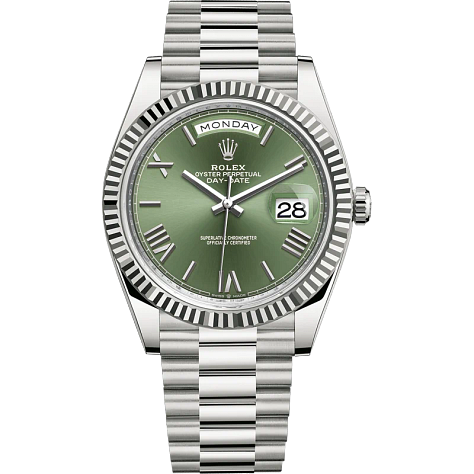


The Day-Date is certainly among the models most affected by this increase partly because it is made of different precious materials, with great use of gold.
In fact, as can be seen from the table below, the Day-Date 40 references in white, rose, and yellow gold all increased by +11%.
Submariner



For steel models, the increase is marginal, with increases around +1/2%, as you see in the table below. Gold models saw increases above +11%, in line with the general trend. The worst were 126613 with +8.6%, 126618 +11.2%, and 126619 +11.3%.
Daytona

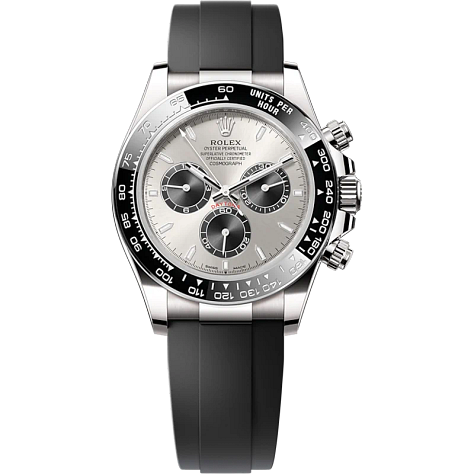

The Daytona collection recorded the largest increases, especially for gold models. The average increase for gold watches was +14%, while steel models saw more moderate increases (+2.5%).
The highest increase was for 126508, which grew by +18.6%, followed by 126518LN +18.5%, while the classic 126500LN was tweaked by only +4%. If we broaden the analysis to the last three years we notice that gold models increased by +37%, while steel by almost +20%.
GMT-Master II



Steel watches, including Batman, Pepsi, and Sprite models, experienced a rather low increase (+1%). On the other hand, steel and gold models increased +7%, as in the case of the Rootbeer, while full gold models increased +12%.
This increase led the Rootbeer to +26% retail over the past 3 years, while steel models stopped at +12%.
Sky-Dweller


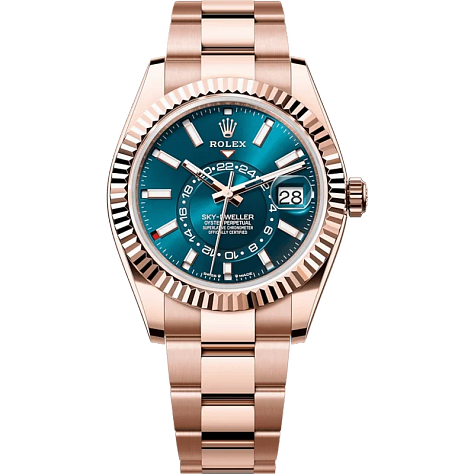
The steel Sky-Dwellers, which you see summarized by the table in reference 336934 both with Oyster and Jubilee bracelets increased slightly more than the average for the steel models because of the fluted bezel that is white gold.
As for the Oysterflex and all-gold models, they had increases around +7%.
Yacht-Master

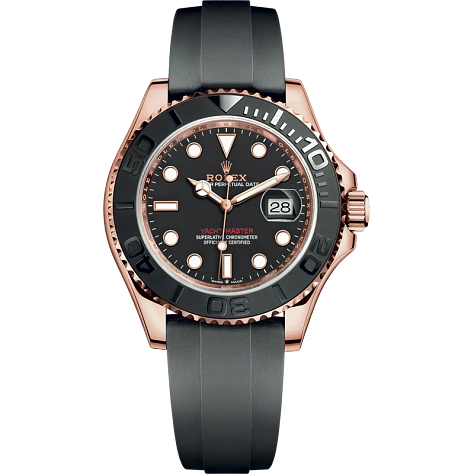
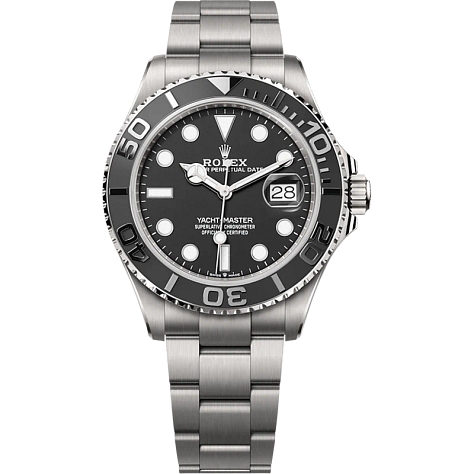
For the Yach-Masters we also find a clear difference in steel and gold models. The former experienced a +1% increase, as in the case of 126622 and 268622. The sharpest increases were for the full gold or Oysterflex models as in the case of 126655 which increased by +11%.
Titanium also had a significant increase of 5%, from €14,750 to €15,550.
Sea-Dweller and Deepsea


+1% increase for the 126600 as it is made of steel, with more significant increases for gold models, as in the case of the Deepsea 136668LB, which went from €56,700 to €60,700 +8.2%. More moderate, however, was the increase for the Deepsea Challenge 136660 passed €26,700 to €28,000 (+4.87%).
Datejust

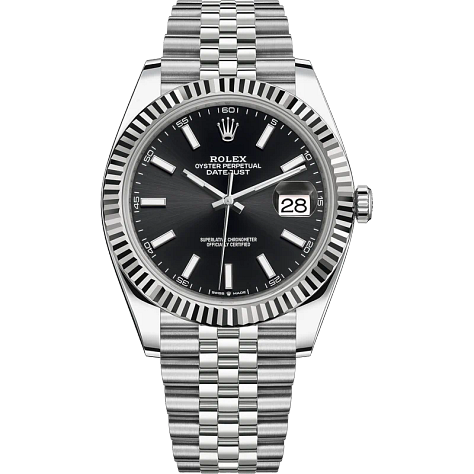

Similar increases to the rest of the models also for the Datejust, with 126334 increasing +3% due to the fluted bezel, as happened with the Sky-Dweller, while the stainless steel model 126300 increases only +1%.
Final Thoughts
The price adjustments, which have occurred year after year, have been strategic for Rolex because in addition to covering the increase in Rolex production costs resulting from inflation or the direct increase in raw materials (as happened this year with gold), they have allowed the maison to raise retail so as to go and earn an additional premium in a market situation where demand is at its highest for this brand.
In fact, the second wrist has taught that there are people willing multiples of the price list, which is why Rolex from year to year has gone to tweak the prices of models, with greater attention to the most in demand and in fact the Pepsi and the Batman have increased by +12% in three years, the Daytona Panda by 19%, not to mention the Oysterflex and the full golds where the increase has been 37%.
A useful approach both for the finances of Rolex itself, but also for repositioning the brand in an even higher market segment.



